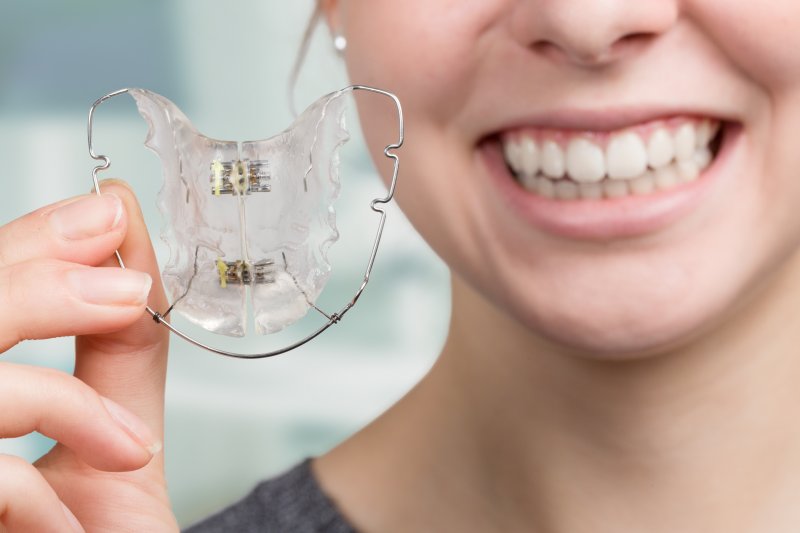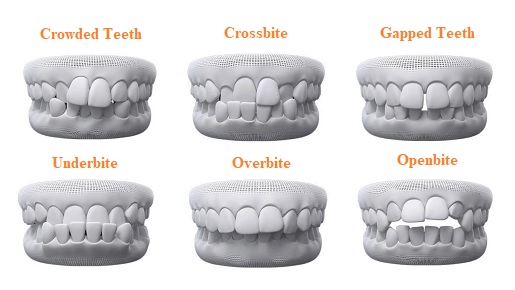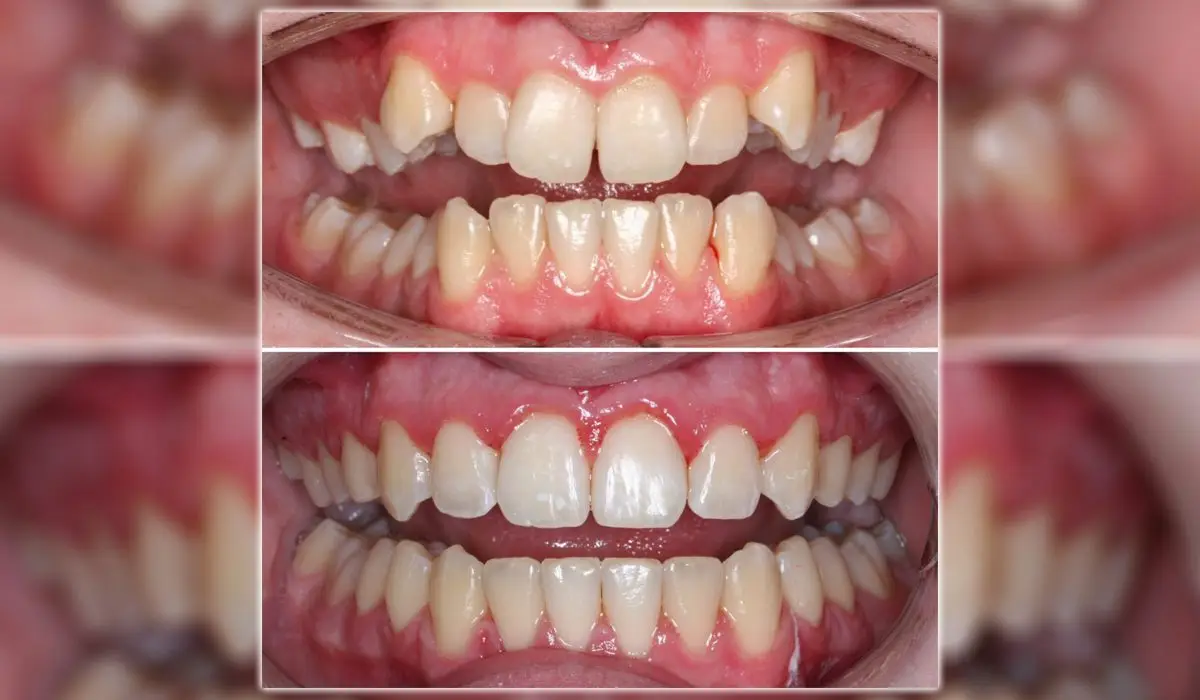Invisalign vs. Typical Braces: Which Alternative Is Right for You?
When thinking about orthodontic therapy, the choice between Invisalign and traditional dental braces presents numerous vital elements that merit cautious assessment. Invisalign supplies a very discreet choice with removable aligners, while traditional braces give a more visible yet effective service for serious misalignment. Each option incorporates distinctive advantages and downsides connected to appearances, convenience, therapy duration, and price. Understanding these nuances is essential for making an informed decision that lines up with your personal preferences and way of living. The inquiry continues to be: which choice will finest satisfy your orthodontic needs and expectations?
Introduction of Treatment Options

In contrast, standard dental braces consist of steel braces and cables that are bonded to the teeth. This technique uses continual pressure gradually to attain alignment. While reliable for complex orthodontic problems, typical braces require routine gos to for changes and can pose difficulties in keeping dental health due to the difficulty of cleansing about brackets and wires.
Both choices have their qualities, and the choice commonly pivots on specific dental conditions, lifestyle preferences, and client compliance. Inevitably, speaking with an orthodontic expert is vital for determining the most suitable therapy plan tailored to individual needs. Understanding the nuances of each option can considerably affect the total success of orthodontic treatment.
Visual Considerations
A considerable variable affecting the selection between Invisalign and traditional dental braces is the visual allure each treatment uses. Invisalign aligners are crafted from clear plastic, making them basically unnoticeable when worn.
In contrast, traditional braces contain steel brackets and cables, which can be much more obvious. While innovations in orthodontic innovation have led to the development of smaller brackets and colored elastics, standard dental braces still maintain a more obvious account. For some individuals, the presence of braces might hinder them from seeking essential treatment.
Eventually, the selection in between Invisalign and standard dental braces might depend upon personal choices concerning aesthetic appeals. Clients who focus on discretion usually lean towards Invisalign, while those who are much less concerned about presence may select conventional dental braces. Comprehending the visual ramifications of each choice is critical for making a notified choice that lines up with one's way of life and choices.
Comfort and Convenience

In terms of comfort, Invisalign aligners are detachable, allowing people to appreciate their favorite foods without restriction and maintain ideal dental health. Cleaning and flossing are streamlined, as the aligners can be secured throughout these regimens, whereas traditional braces call for careful maneuvering around cords and braces.
Furthermore, Invisalign's modern system permits less orthodontic check outs. People usually get numerous sets of aligners at when, which can improve the therapy procedure and lower time invested in the orthodontist's chair. In contrast, typical dental braces demand routine changes, making them much less hassle-free for those with hectic schedules. Invisalign. Overall, the convenience and ease of Invisalign make it an enticing option for many people looking for orthodontic treatment.
Treatment Duration and Effectiveness
While both Invisalign and traditional dental braces are effective in remedying oral misalignments, the duration of treatment can vary significantly between the two alternatives. Commonly, Invisalign treatment can take anywhere from 12 to 18 months, depending upon the complexity of the case. The clear aligners work by progressively moving teeth into their preferred settings, and normal follow-ups with an orthodontist help guarantee progression continues to be on the right track.
In contrast, standard braces typically require a longer commitment, normally varying from 18 months to 3 years. This is due to their set nature and making use of cords and braces, which can be much more effective for serious imbalances and complex instances (Invisalign). The therapy performance of conventional braces is well-documented, as they enable specific modifications and better control over tooth activity
Inevitably, the option between Invisalign and standard dental braces might hinge on both the awaited treatment period and the particular oral problems handy. Consulting with an orthodontist is essential, as they can offer customized recommendations based on private needs, making sure the selected method straightens with wanted outcomes and timeframes.
Cost Comparison and Insurance Policy Options
Cost plays a significant role in the decision-making process for people thinking about orthodontic therapy, whether selecting Invisalign or conventional dental braces. Usually, the expense of Invisalign arrays from $3,000 to $8,000, while traditional dental braces commonly set you back in between $2,000 and $6,000. Elements influencing these expenses consist of the complexity of the case, the duration of therapy, and geographical area.
Insurance policy insurance coverage can considerably impact out-of-pocket expenses. Many oral insurance plans offer partial coverage for orthodontic therapies, but the specifics can differ commonly. It find out is essential for individuals to review their insurance coverage to identify the level of coverage for either option. Generally, traditional braces might be much more regularly covered by insurance policy plans contrasted to Invisalign, which some insurance providers classify as an aesthetic procedure.
Additionally, numerous orthodontic techniques use flexible layaway plan, making both treatment options more available. Patients ought to make inquiries regarding potential funding alternatives and discount rates for in advance repayments. Assessing the complete cost, consisting of insurance benefits and layaway plan, is necessary for making an informed choice that lines up with both visual preferences and budget considerations.

Conclusion
In recap, the choice in between Invisalign and conventional dental braces hinges on numerous factors, consisting of visual preferences, comfort, therapy period, and expense. Invisalign supplies a discreet, detachable option that helps with oral hygiene and nutritional versatility, while conventional dental braces might be better for complicated dental problems and typically come with a reduced price point. Eventually, appointment with an orthodontist is important to analyze individual conditions and figure out the most suitable treatment choice for attaining check my reference optimum dental alignment.
When pop over to this site thinking about orthodontic therapy, the option between Invisalign and conventional braces presents several crucial variables that merit careful evaluation.Contrasting Invisalign and typical braces reveals unique therapy options for orthodontic modification.While both Invisalign and standard braces are reliable in correcting oral misalignments, the period of therapy can differ dramatically between the 2 options.Cost plays a considerable role in the decision-making process for individuals thinking about orthodontic therapy, whether opting for Invisalign or typical dental braces.In summary, the option in between Invisalign and standard dental braces pivots on several variables, including aesthetic choices, comfort, therapy duration, and price.